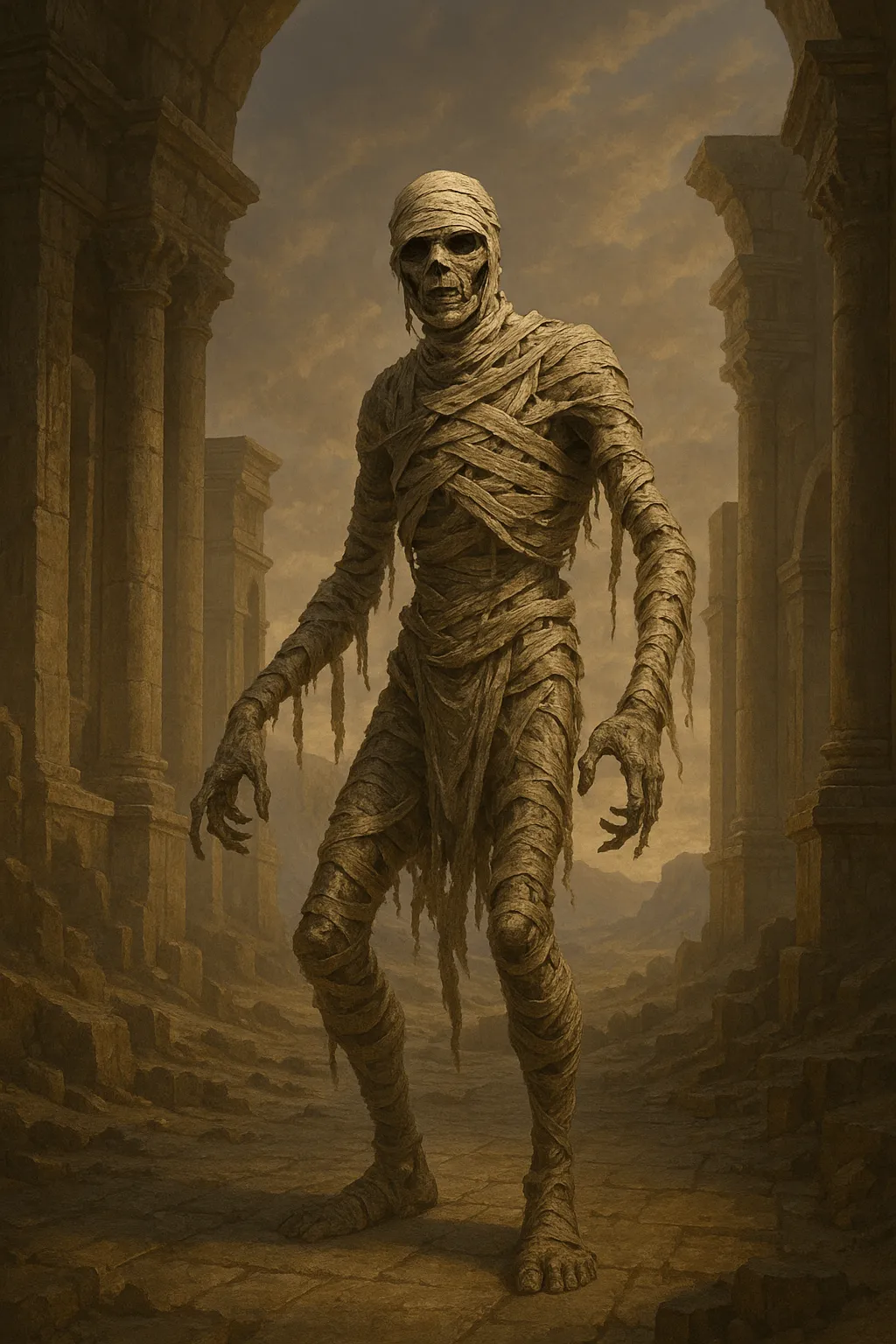
Bound in ritual, sustained by purpose, every fold a memory.
In regions where the air is dry and the soil resists decay, the dead are often wrapped and sealed rather than buried or burned. What begins as preservation may, over decades or centuries, shift into something else entirely. Dustwoven Servants are not merely embalmed corpses — they are revenants of duty, memory, or curse, bound by spellwork, ritual, or unfinished oaths to serve long after flesh should have failed.
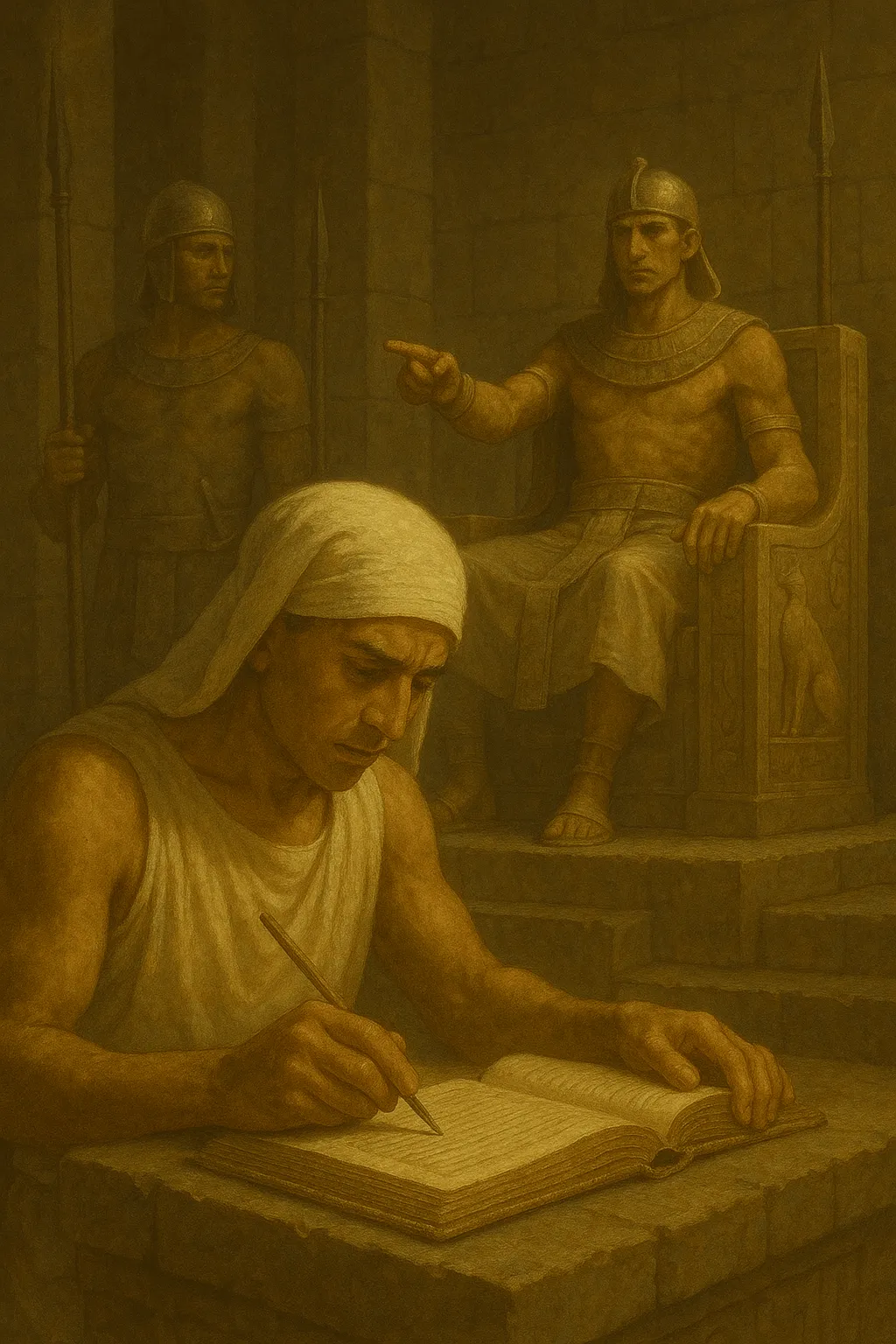 The process of becoming a Dustwoven is rarely intentional from the victim’s perspective. Most are entombed with ceremonial bindings — lengths of cloth inscribed with warding glyphs, ancestral prayers, or arcane seals. These wrappings are not symbolic alone; they function as magical conduits, absorbing the energies of the tomb, the land, and the lingering wills of the living. In some cases, the bindings themselves are the spell, gradually knitting the soul back into the husk it once animated, regardless of consent.
The process of becoming a Dustwoven is rarely intentional from the victim’s perspective. Most are entombed with ceremonial bindings — lengths of cloth inscribed with warding glyphs, ancestral prayers, or arcane seals. These wrappings are not symbolic alone; they function as magical conduits, absorbing the energies of the tomb, the land, and the lingering wills of the living. In some cases, the bindings themselves are the spell, gradually knitting the soul back into the husk it once animated, regardless of consent.
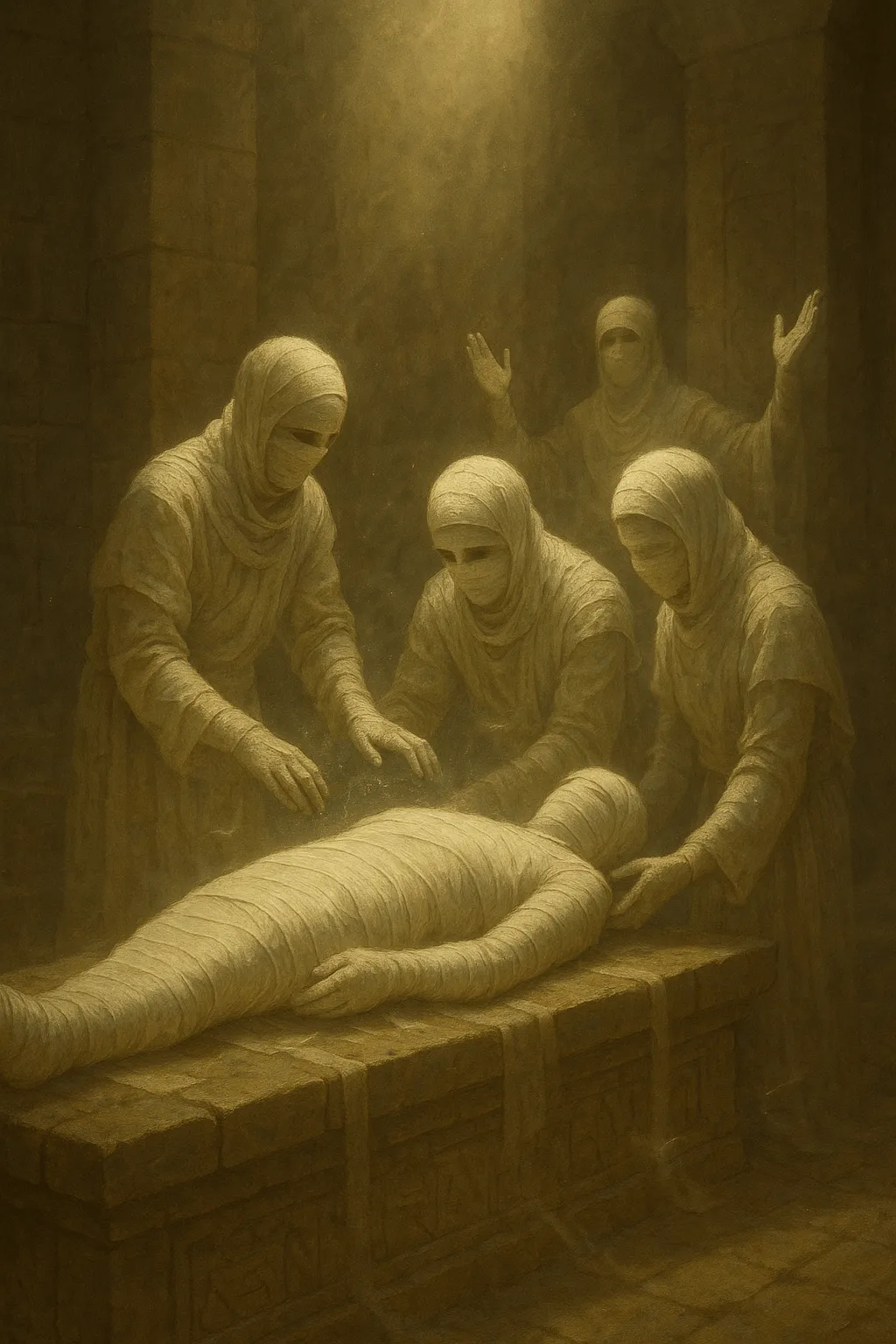 Not all Dustwoven were nobles or priests, as myths often claim. Many served in more practical capacities: chamber guards, food-bearers, scribes, concubines, stable hands — any role the dead elite believed they would still require beyond the veil. Their preservation ensured their availability in the afterlife. Unfortunately, not every ritual succeeded cleanly. Some awoke confused, others furious, others still unaware they had died at all.
Not all Dustwoven were nobles or priests, as myths often claim. Many served in more practical capacities: chamber guards, food-bearers, scribes, concubines, stable hands — any role the dead elite believed they would still require beyond the veil. Their preservation ensured their availability in the afterlife. Unfortunately, not every ritual succeeded cleanly. Some awoke confused, others furious, others still unaware they had died at all.
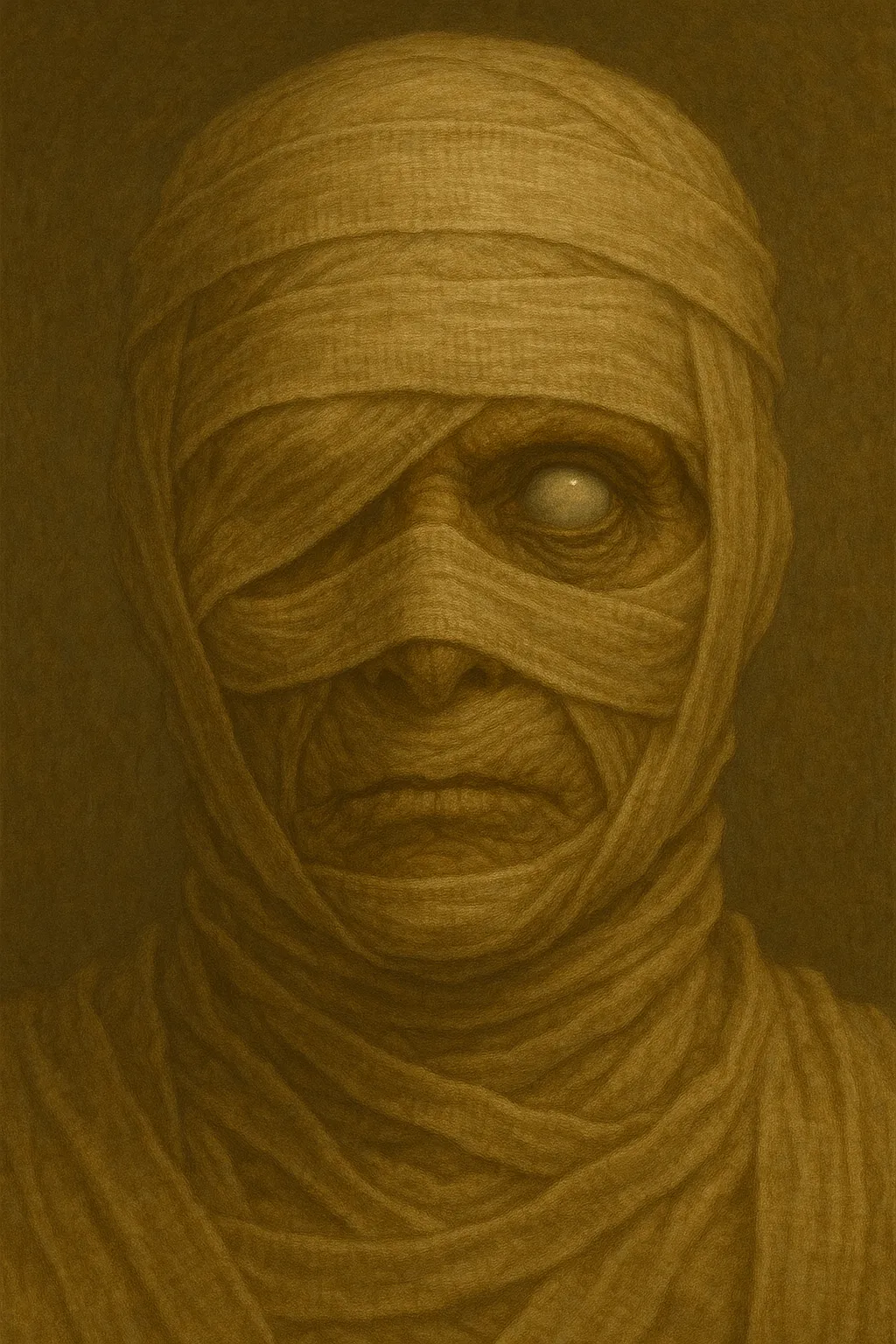 In their reawakened state, Dustwoven Servants display slow but purposeful movement. Their eyes, when visible, are clouded or absent, yet they navigate their surroundings with an uncanny sense of spatial awareness, as if tracing remembered paths or responding to old commands still echoing through time. Many do not speak, or cannot. Those that do often use dead languages, whispering instructions, prayers, or invocations to long-forgotten figures.
In their reawakened state, Dustwoven Servants display slow but purposeful movement. Their eyes, when visible, are clouded or absent, yet they navigate their surroundings with an uncanny sense of spatial awareness, as if tracing remembered paths or responding to old commands still echoing through time. Many do not speak, or cannot. Those that do often use dead languages, whispering instructions, prayers, or invocations to long-forgotten figures.
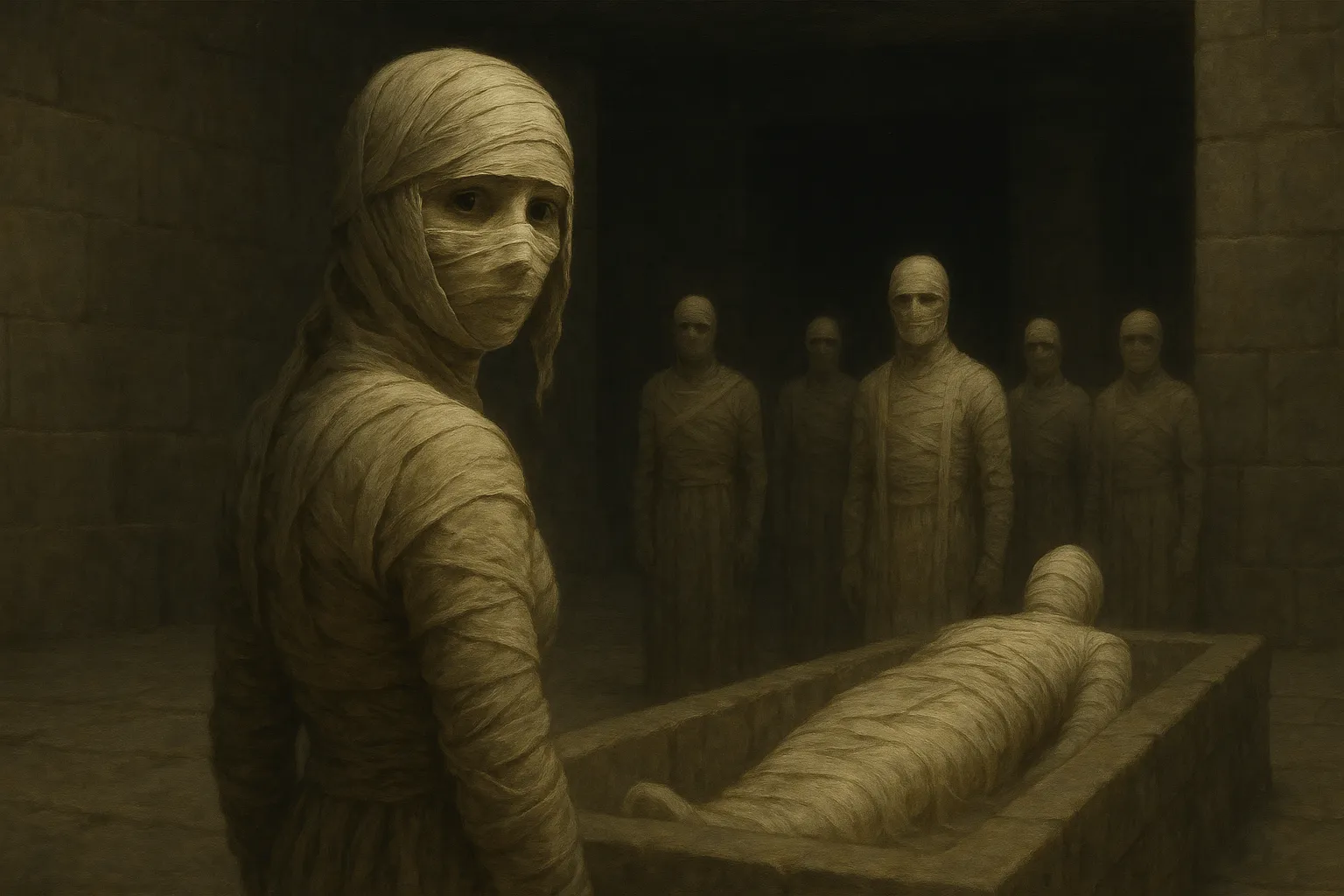 Scholars debate whether Dustwoven retain self-awareness. Some necromancers claim to have communicated with individual Servants who recall fragments of life before wrapping. Others insist the creatures are no more sentient than golems — animated wrappings with echoes of personhood stitched into their linen veils.
Scholars debate whether Dustwoven retain self-awareness. Some necromancers claim to have communicated with individual Servants who recall fragments of life before wrapping. Others insist the creatures are no more sentient than golems — animated wrappings with echoes of personhood stitched into their linen veils.
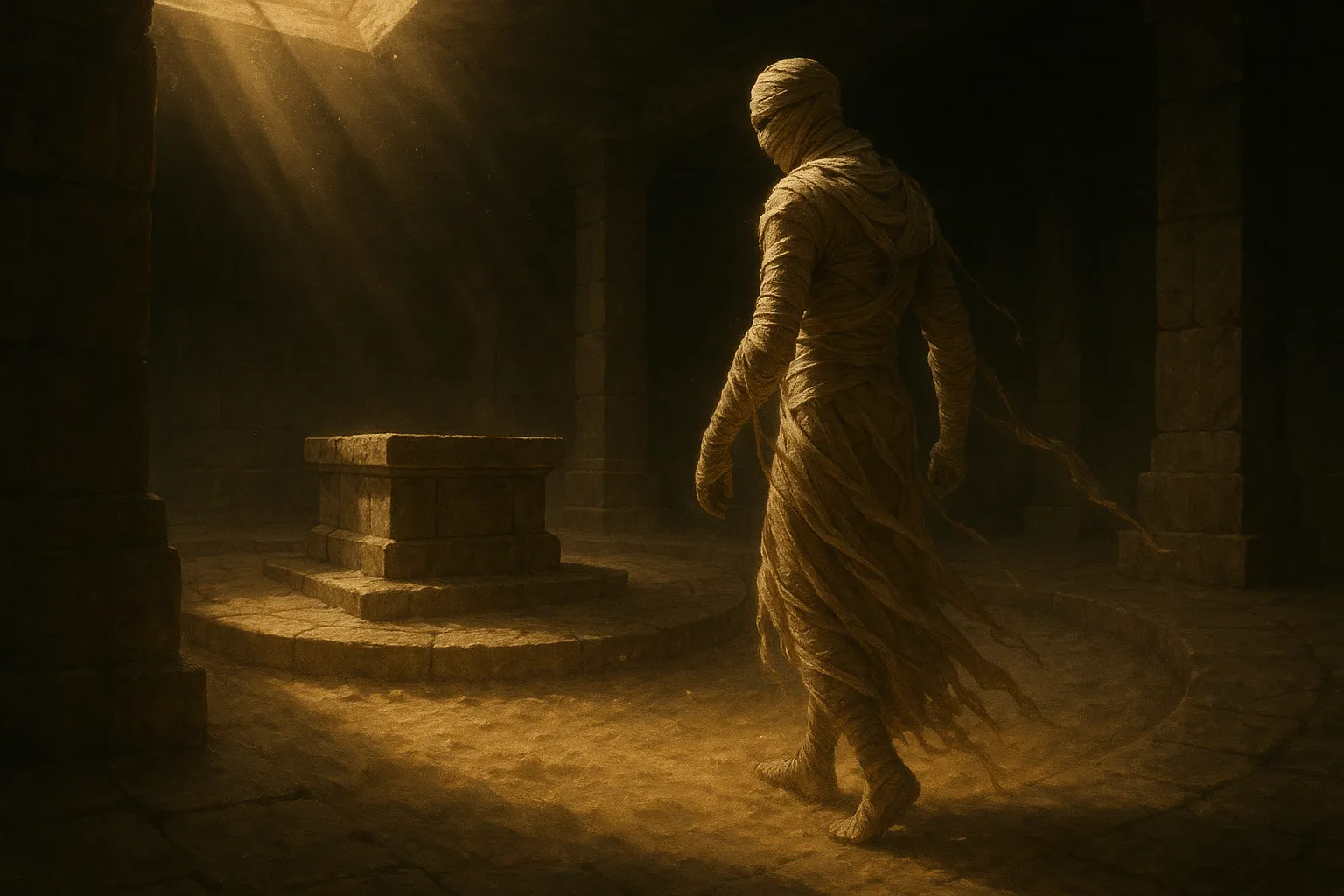 Their presence is usually tied to a central locus: a tomb, altar, reliquary, or buried foundation. Attempts to remove them forcibly from these places are rarely successful. The land resists. The winds rise. In one case, a merchant caravan excavated and relocated a Dustwoven crypt to serve as a spectacle in a distant capital. Within weeks, the corpses had turned to dust — but the bindings remained animate, twisting through the halls like dry serpents.
Their presence is usually tied to a central locus: a tomb, altar, reliquary, or buried foundation. Attempts to remove them forcibly from these places are rarely successful. The land resists. The winds rise. In one case, a merchant caravan excavated and relocated a Dustwoven crypt to serve as a spectacle in a distant capital. Within weeks, the corpses had turned to dust — but the bindings remained animate, twisting through the halls like dry serpents.
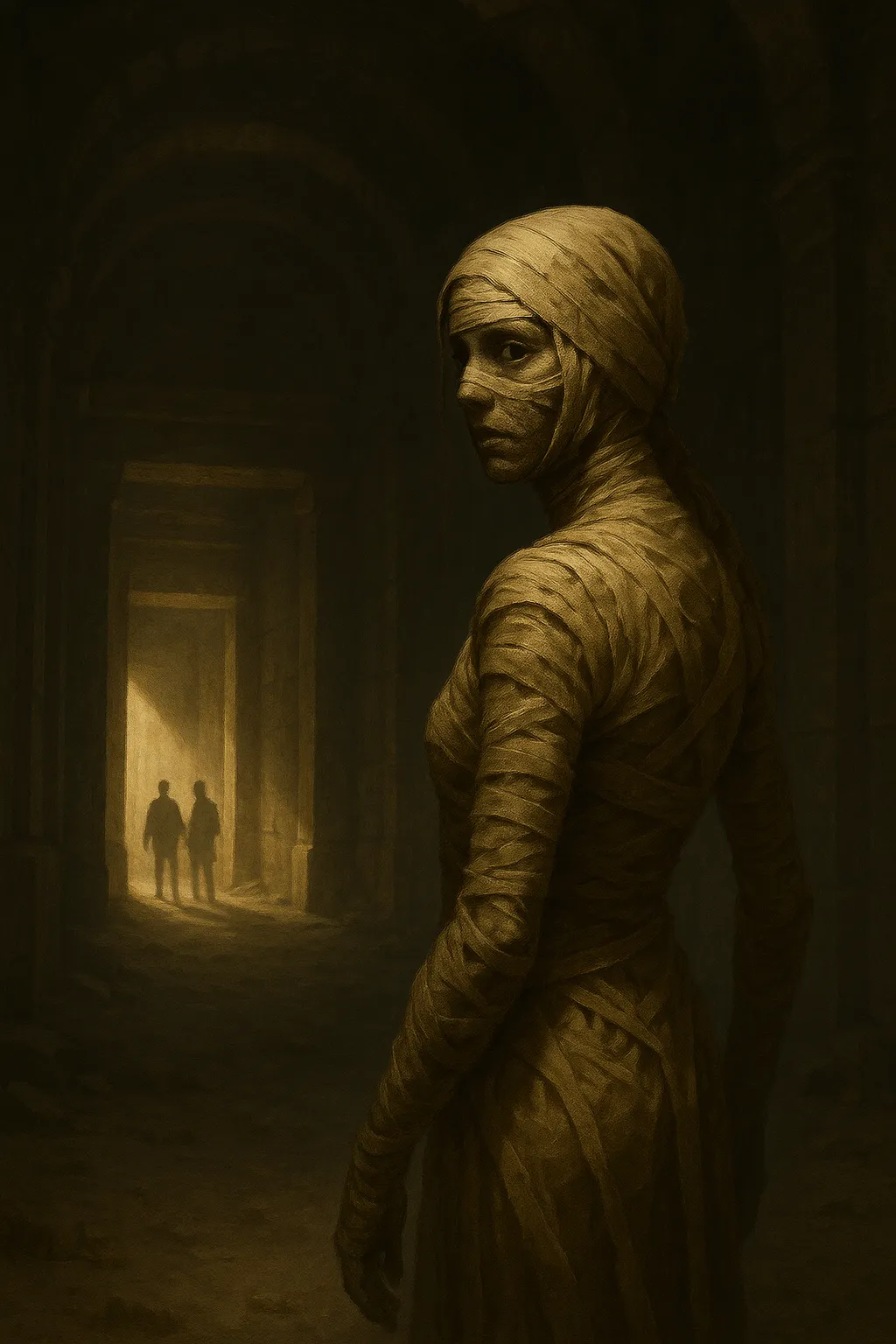 Their magic, such as it is, leans heavily toward warding and protection—subtle, enduring enchantments that resist time as stubbornly as the Dustwoven themselves. They do not cast spells like living mages, but anchor magic through presence, ritual, and placement. A Dustwoven might stand for centuries at a threshold, its body serving as a seal. Their purpose is to deny passage, preserve rites, and maintain sacred boundaries—not through violence, but through ancient, unmoving will.
Their magic, such as it is, leans heavily toward warding and protection—subtle, enduring enchantments that resist time as stubbornly as the Dustwoven themselves. They do not cast spells like living mages, but anchor magic through presence, ritual, and placement. A Dustwoven might stand for centuries at a threshold, its body serving as a seal. Their purpose is to deny passage, preserve rites, and maintain sacred boundaries—not through violence, but through ancient, unmoving will.
It is believed that truly severing the soul of a Dustwoven requires burning both the corpse and every shred of the enchanted binding, ideally on consecrated ground. Mere fire alone may reduce the body, but the cloth often survives, fluttering free on the wind or slithering back toward old ruins to begin the cycle again.
The following magical heirlooms are fictional and lore-based in nature. Each one is an affiliate link to a real-world item on Amazon that we've hand-selected to complement this artifact's lore.
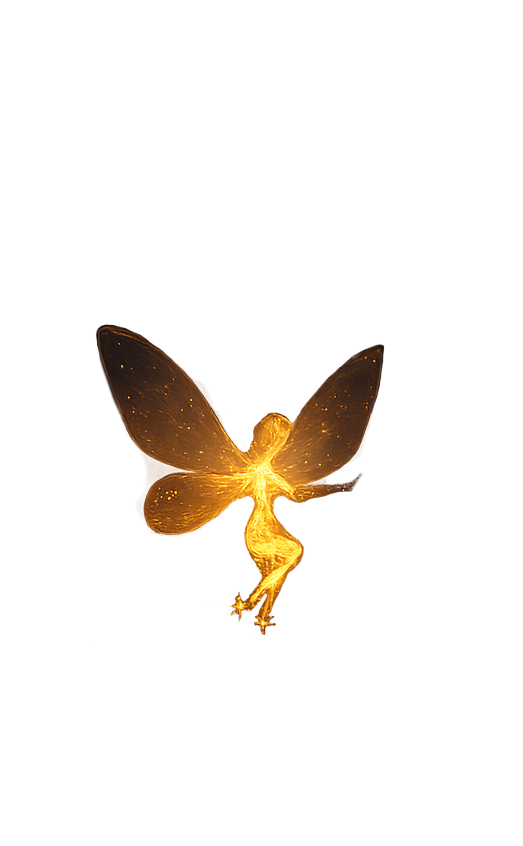
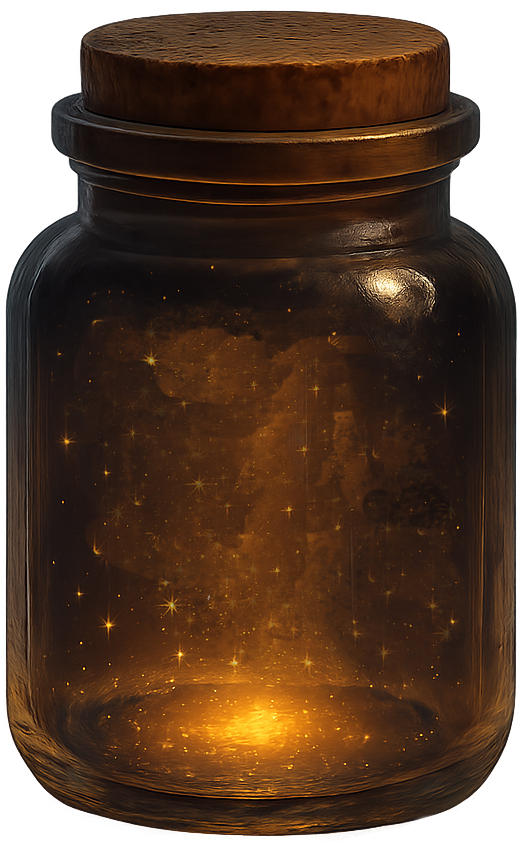
If you click a link and buy an item, we may earn a commission.It costs you nothing extra, but can help keep this little corner of the internet glowing.
What does this mean?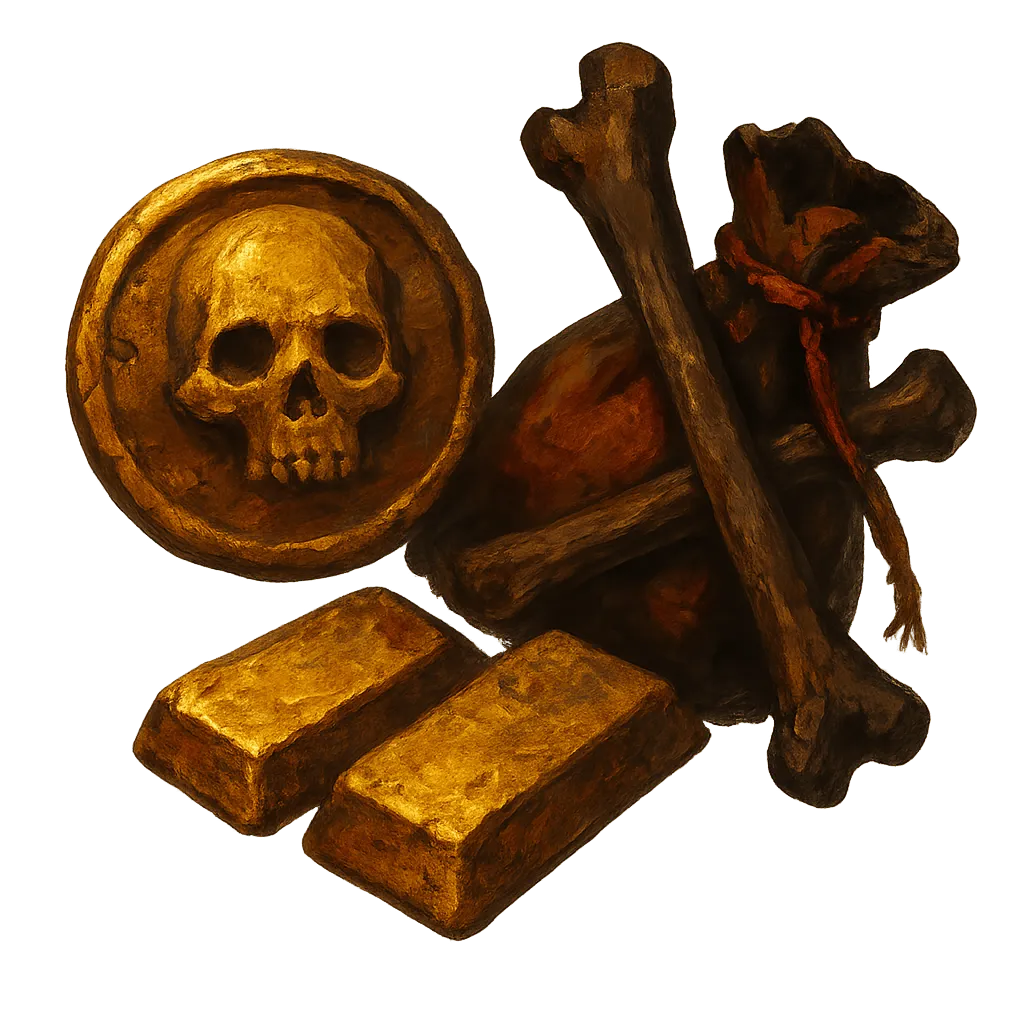
Beautiful, shiny, and non-redeemable. Occasionally attracts sea monsters and debt collectors.

Now anyone can be a daywalker with the our new vampiric camping gear!
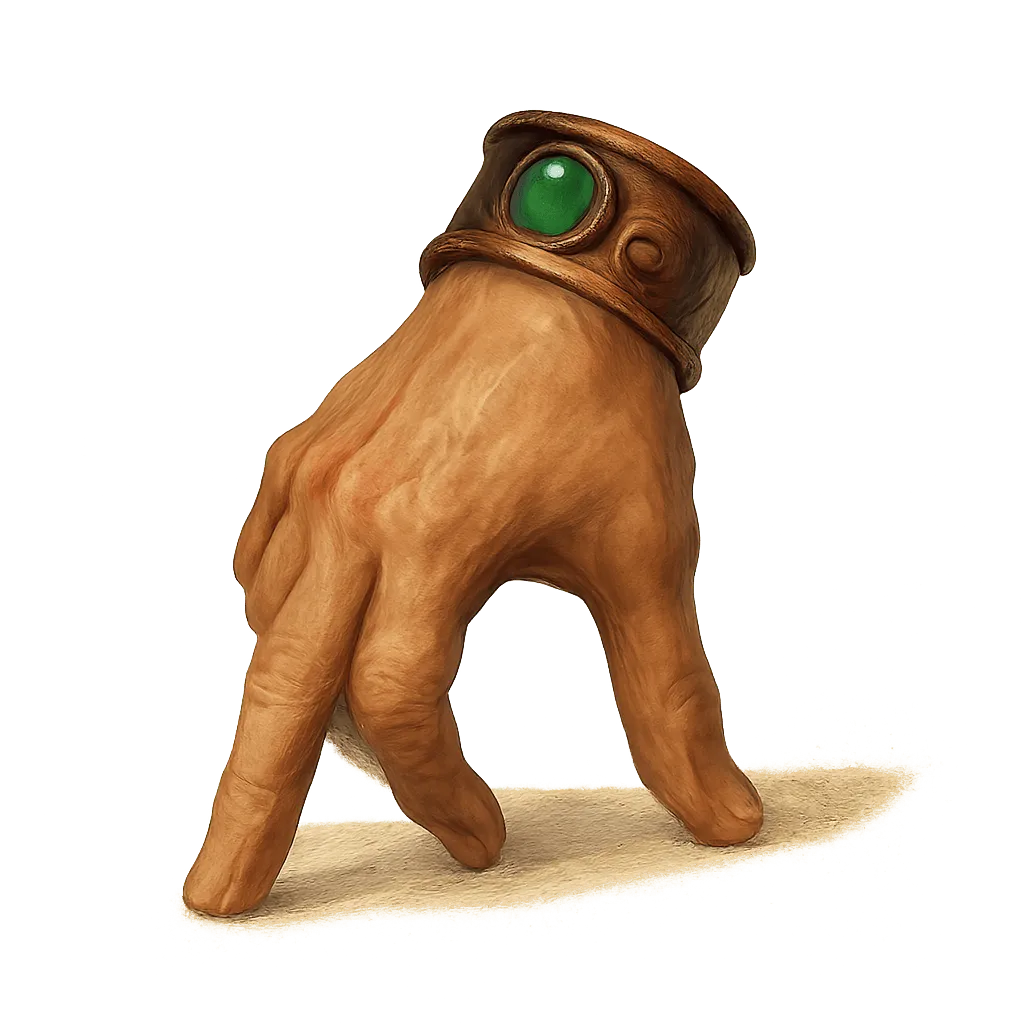
Summoned from the Sock Dimension, it’s great at holding snacks, bad at boundaries, and constantly trying to pat your head encouragingly.
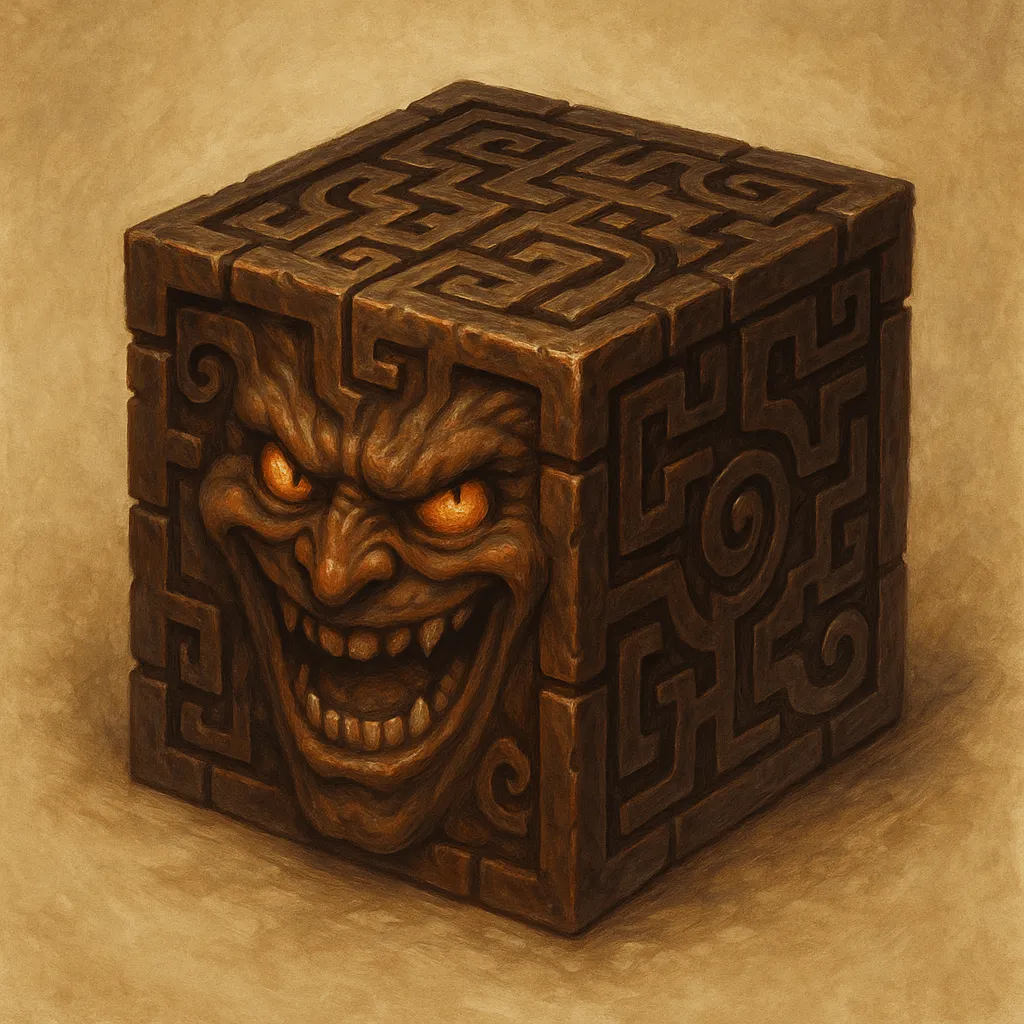
It laughs uncontrollably, alternating between angry and ticklish.





